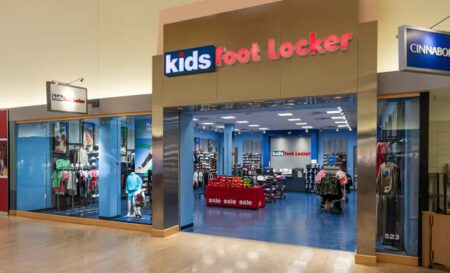The United States’ Pacific Northwest faces a grave natural threat that scientists say could unleash one of the most catastrophic events in modern American history: a mega tsunami triggered by a powerful earthquake in the Cascadia Subduction Zone (CSZ). According to recent findings from geoscientists at Virginia Tech, there’s a 15% chance of a magnitude 8.0 or higher earthquake occurring along the CSZ in the next 50 years—a scenario that could trigger an enormous tsunami capable of overwhelming coastal regions in minutes.
This geological fault, which spans roughly 600 miles from Northern California to British Columbia’s Vancouver Island, is a ticking time bomb of tectonic pressure. It marks the boundary where the Juan de Fuca Plate dives beneath the North American Plate. The last major earthquake in this region occurred in 1700 and generated a tsunami that reached Japan.
What Would Happen If a Mega Tsunami Hits the Pacific Coast?
If an earthquake of that magnitude were to strike today, the consequences would be significantly worse due to the population density and infrastructure along the US West Coast. Cities like Seattle, Portland, and coastal towns in northern California would be at immediate risk of being inundated by tsunami waves potentially reaching 1,000 feet in height. These waves could strike within minutes, leaving little to no time for evacuation.
Virginia Tech’s team, led by geoscientist Tina Dura, used tens of thousands of computer simulations to predict the aftermath. The models suggest widespread land subsidence could expand floodplains dramatically, reshaping coastlines and washing away miles of infrastructure. Sea levels could drop by as much as 6.5 feet before the tsunami strikes, a classic harbinger of approaching disaster.
Why It Matters: Lives, Infrastructure, and Economy at Risk
The projected damage from a CSZ-triggered tsunami is staggering: over 170,000 buildings could be destroyed, more than 30,000 lives lost, and economic losses might exceed $81 billion. The study also warns that current hazard maps may significantly underestimate the scope of potential flooding, which means more homes and critical facilities are at risk than previously believed.
Northern Oregon, southern Washington, and northern California face the highest risk due to their proximity to the fault line and low-lying coastal zones. While Alaska and Hawaii are also vulnerable due to their own seismic activity, their distance from the CSZ offers some buffer from direct tsunami impacts.
Expert Analysis: Urgent Need for New Evacuation Plans
“The expansion of the coastal floodplain following a Cascadia subduction zone earthquake has not been previously quantified,” said lead researcher Tina Dura. “The impacts to land use could significantly increase the timeline to recovery.”
The findings emphasize the need for:
Stronger and faster early-warning systems
Improved evacuation plans and public drills
Updated hazard mapping
Coastal engineering to build more resilient infrastructure
These are not merely academic concerns. In a densely populated, technologically integrated society, delays in emergency response or underestimation of risk can lead to exponentially greater losses.
Preparing for a Rare but Catastrophic Event
While such mega quakes are rare, the consequences are so severe that preparation becomes a moral imperative. Municipalities, state governments, and federal agencies must collaborate now to reinforce readiness, educate the public, and allocate funding for disaster mitigation.
Disaster preparedness experts urge coastal residents to familiarize themselves with tsunami evacuation routes and maintain emergency kits. It’s not a question of “if,” but “when”—and when that moment arrives, only those who are ready will have a fighting chance.
The potential for a mega tsunami caused by a Cascadia Subduction Zone earthquake is one of the most serious natural disaster threats facing the United States today. With tens of thousands of lives and billions in infrastructure at risk, the time to act is now.
For your information:
What is the Cascadia Subduction Zone?
The Cascadia Subduction Zone is a fault line where the Juan de Fuca Plate subducts beneath the North American Plate. It stretches from Northern California to British Columbia and is capable of generating magnitude 9.0 earthquakes and massive tsunamis.
How high could a Cascadia tsunami be?
A tsunami generated by a major CSZ quake could produce waves up to 1,000 feet high in some regions, drastically exceeding typical tsunami wave heights.
Which areas are at the greatest risk from a CSZ mega tsunami?
Northern Oregon, southern Washington, and northern California are the most vulnerable. Cities like Seattle and Portland could face immediate devastation.
How much warning time would people have?
Warning time would be minimal—sometimes just minutes. This is why early warning systems and public evacuation preparedness are critical.
Has a tsunami from Cascadia hit before?
Yes, the last major event occurred in 1700 and was recorded in Japanese historical records due to the tsunami it caused across the Pacific Ocean.
How can people prepare for a potential mega tsunami?
Residents should know their local tsunami evacuation routes, keep emergency supplies ready, and stay informed through official channels like the USGS and FEMA.
Virginia Tech – Research and analysis conducted by geoscientist Tina Dura and her team on the Cascadia Subduction Zone earthquake and tsunami risk.
The Independent (UK) – Reporting on the Virginia Tech study and the estimated 15% probability of a magnitude 8.0 or greater earthquake occurring within the next 50 years.
US Geological Survey (USGS) – Background context on the Cascadia Subduction Zone’s tectonic activity and historical seismic events, including the 1700 earthquake and tsunami.
Historical Records from Japan (1700 event) – Documentation of the trans-Pacific tsunami impact caused by the last major CSZ earthquake.
Get the latest News first — Follow us on Google News, Twitter, Facebook, Telegram and subscribe to our YouTube channel.




